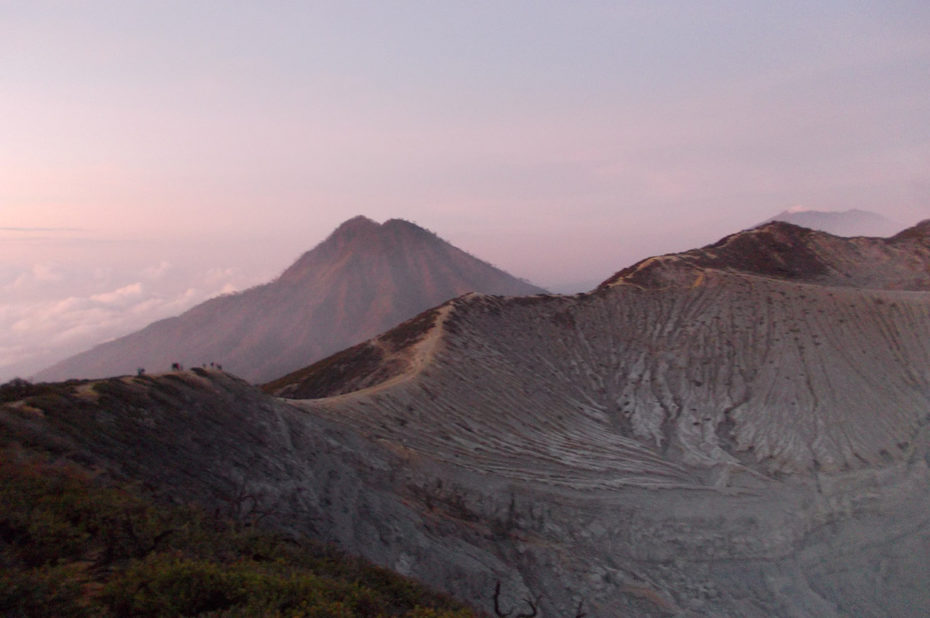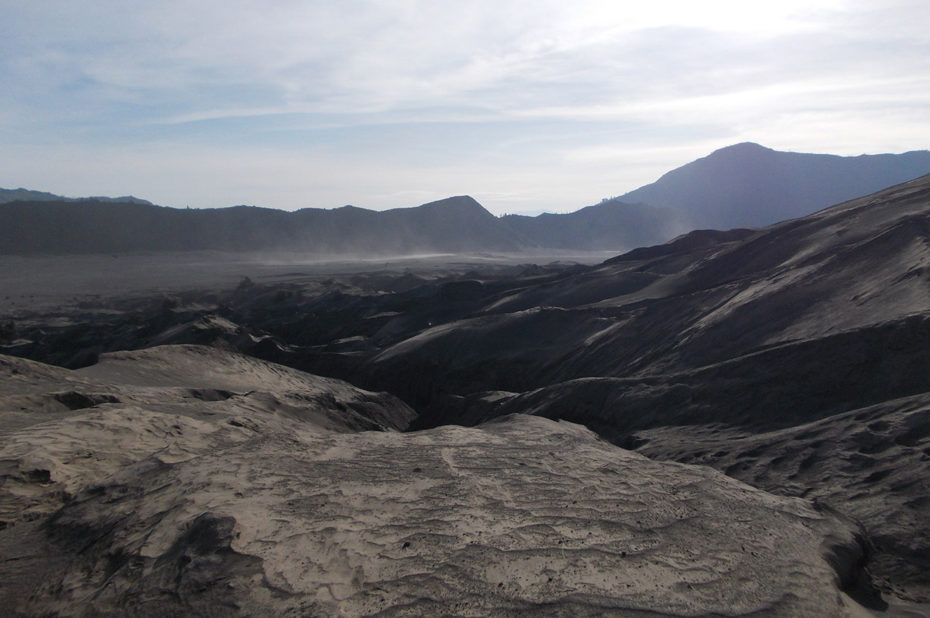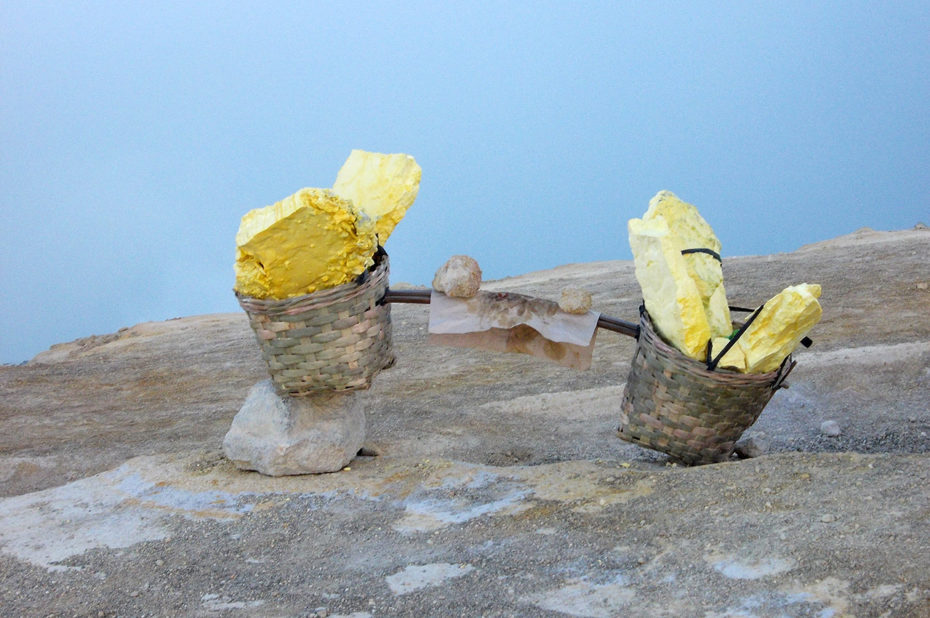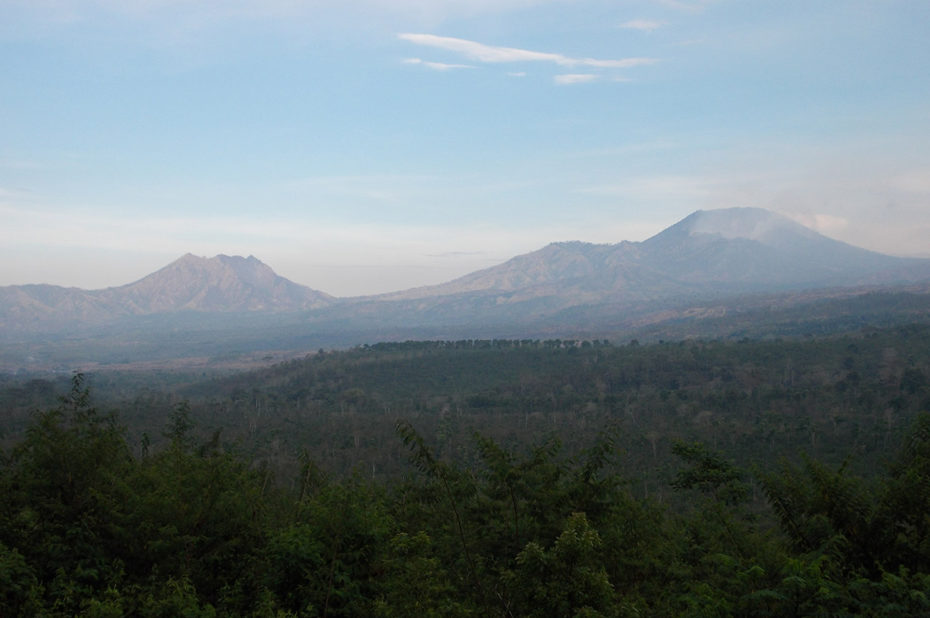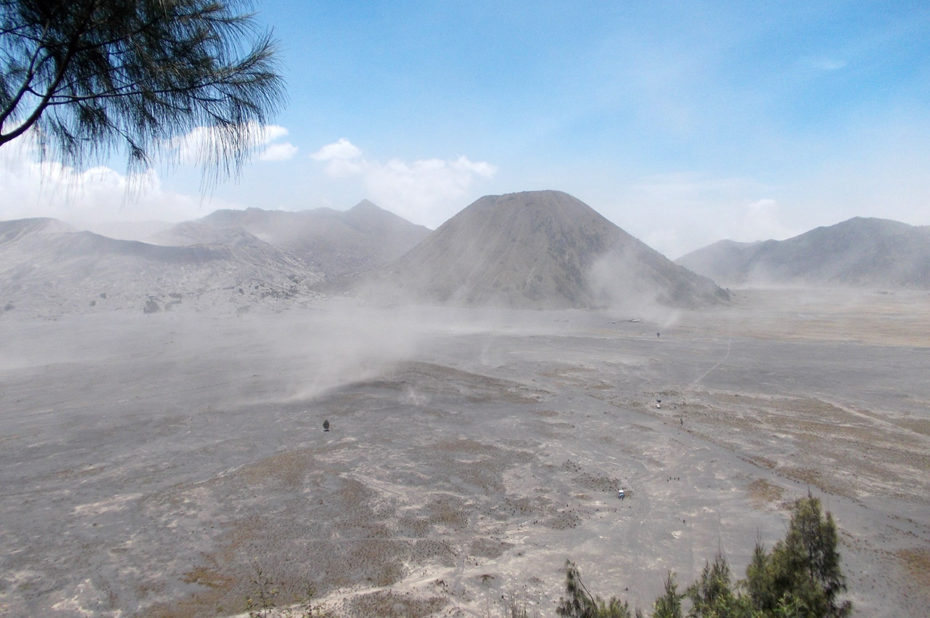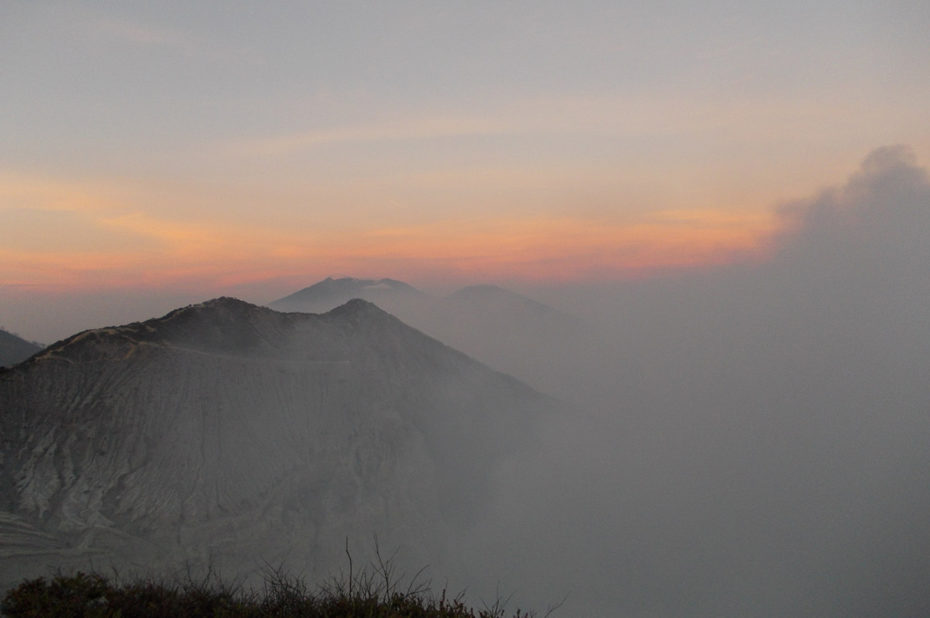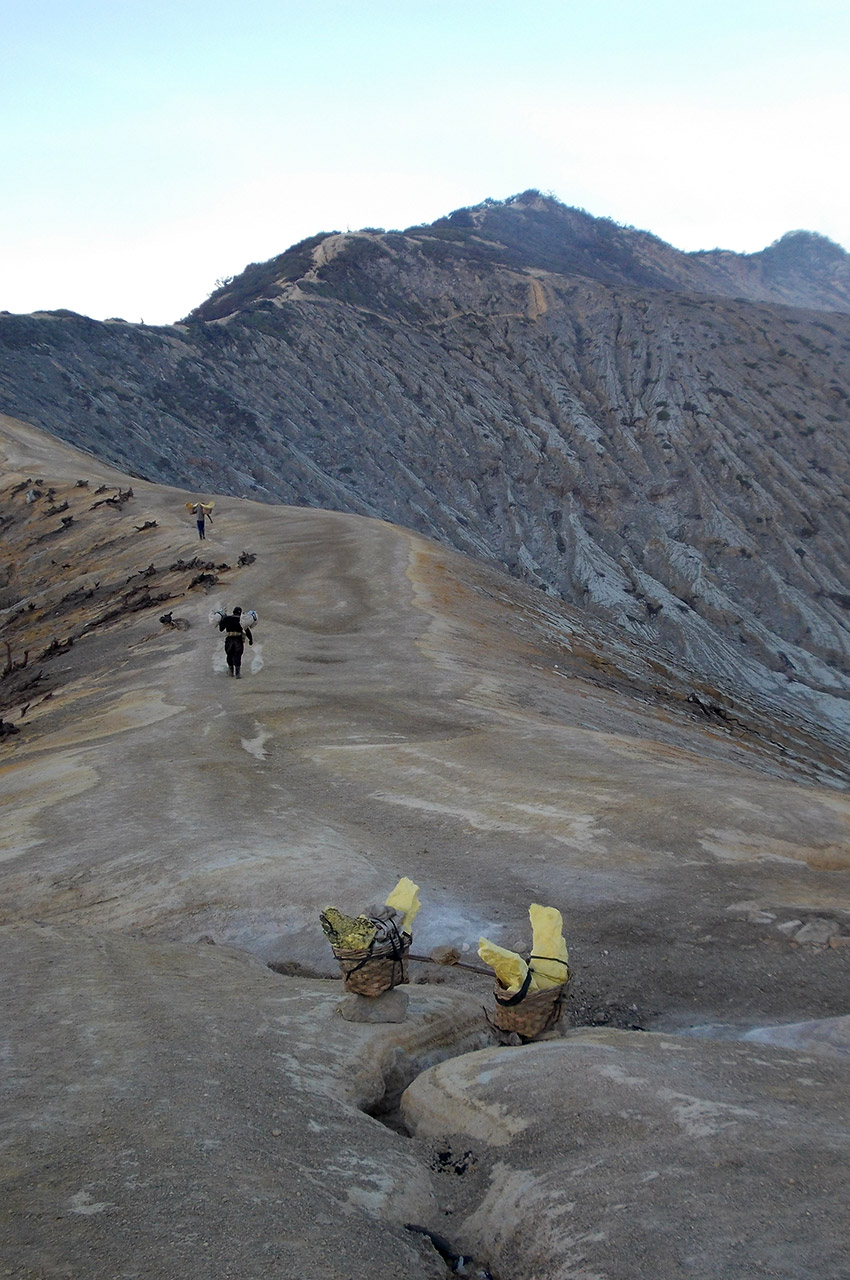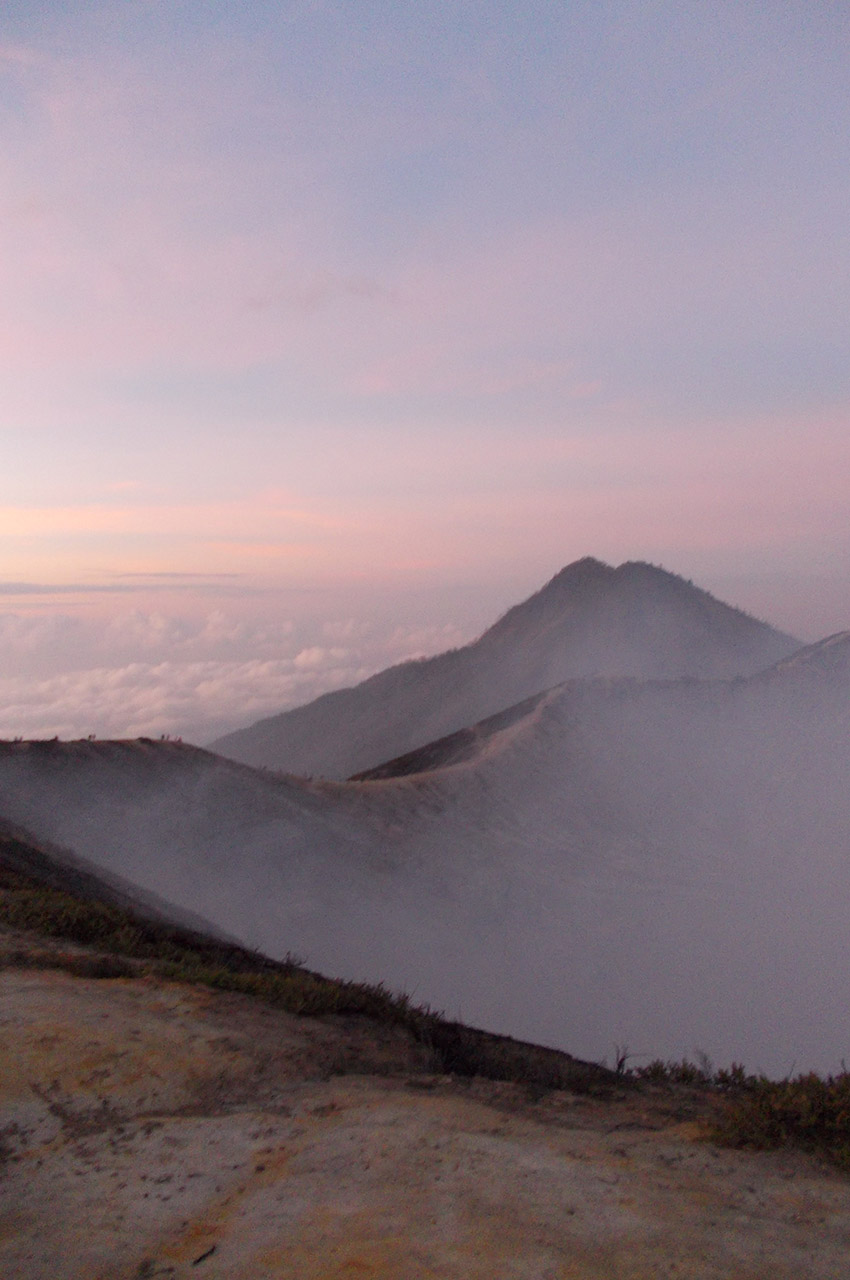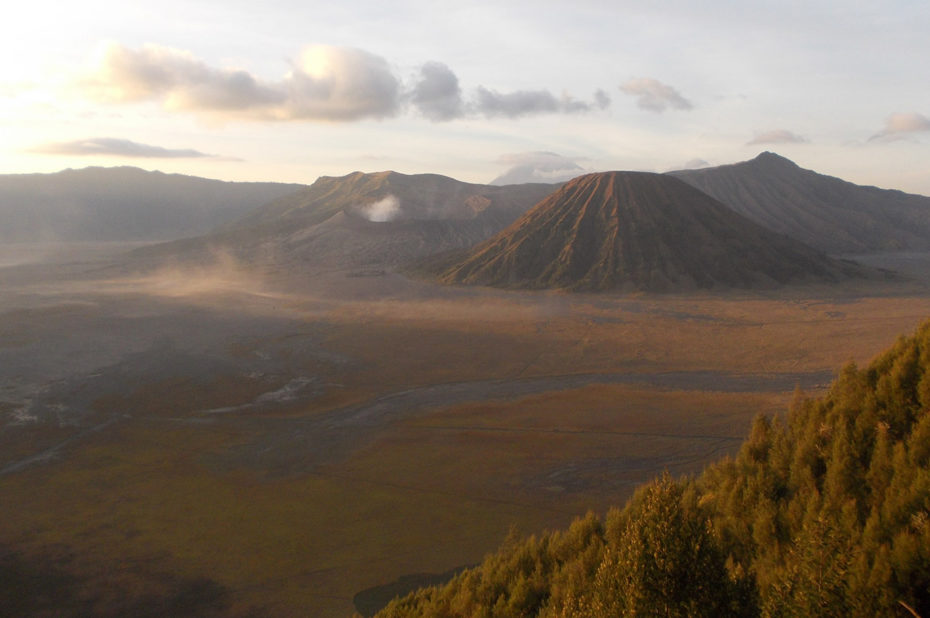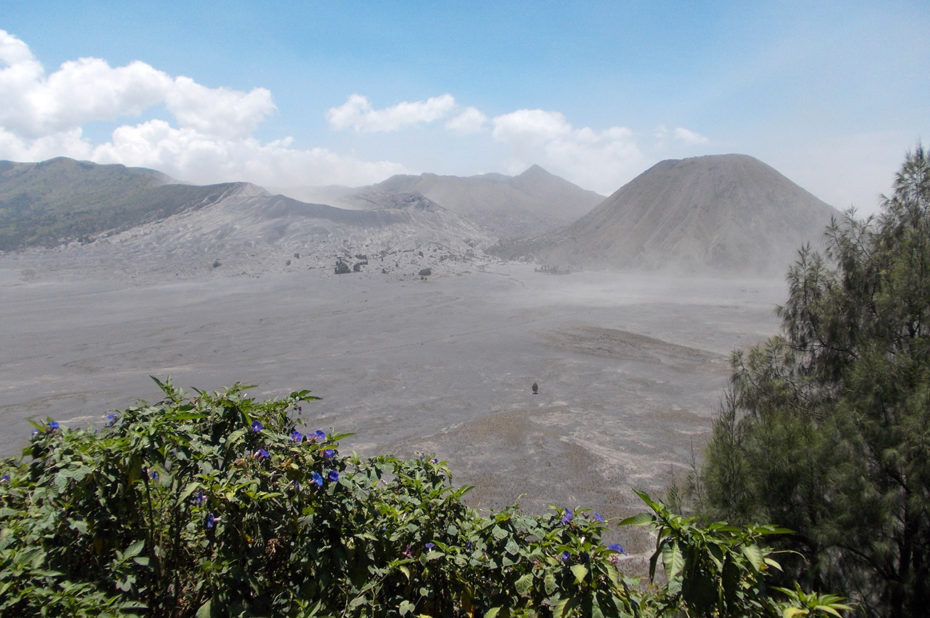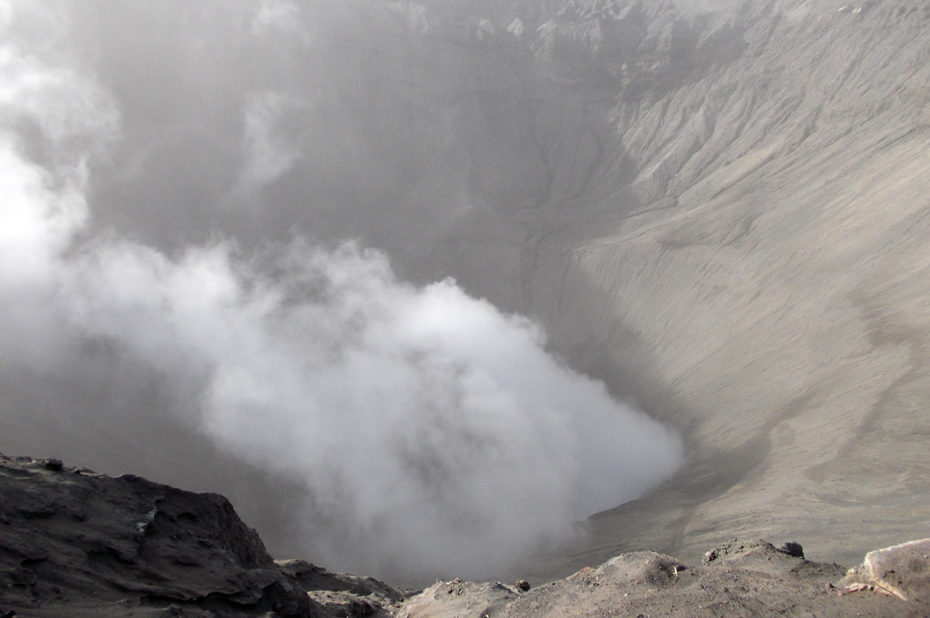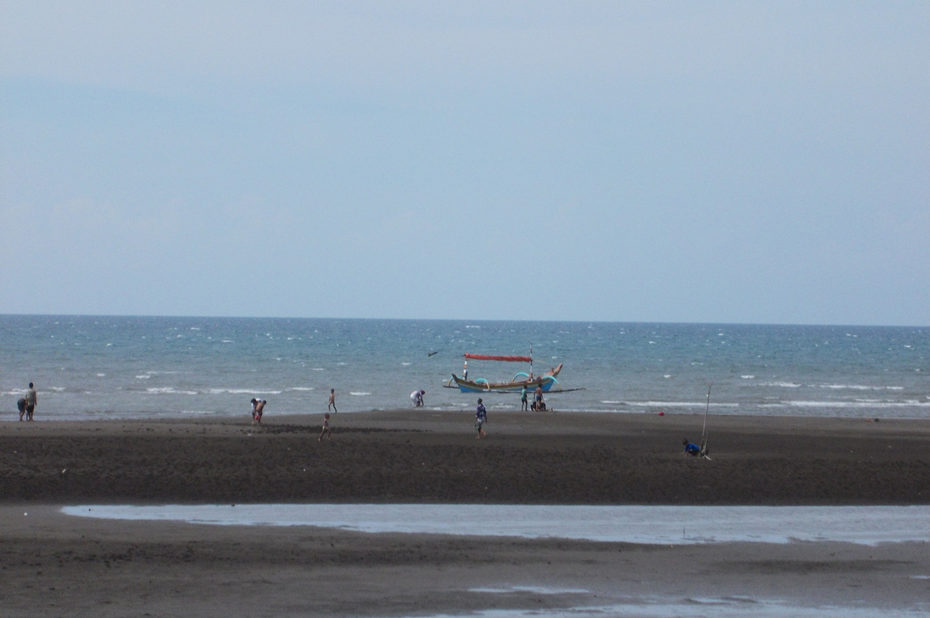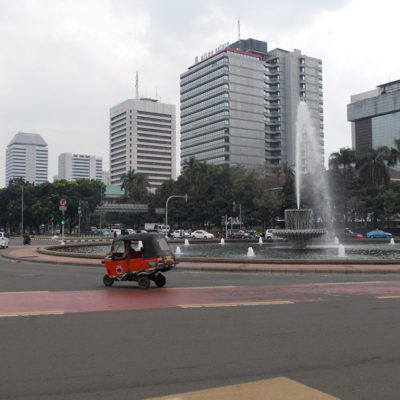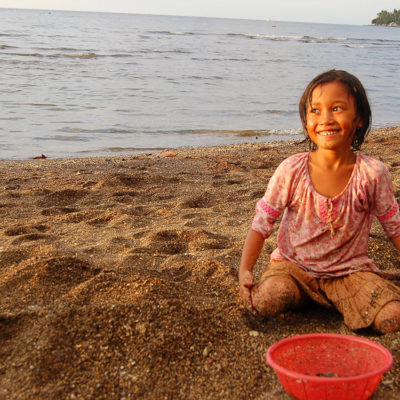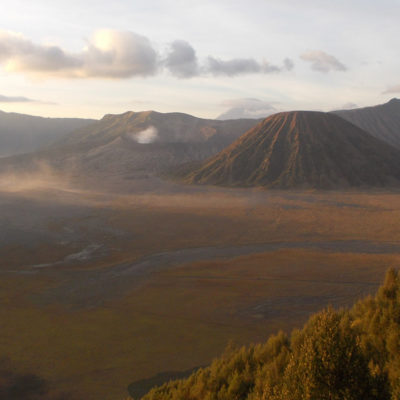
Java has always been the object of covetousness, the starting point of invasions, the cradle of civilizations and the sanctuary of religions. From the Sunda Strait to Bali over a distance of 1,200 km, this island alone boasts 17 volcanoes with a reputation for danger… A typical example of arc volcanism, this subduction zone is home to all types of eruptive dynamism: explosions, fiery clouds, lava flows or extrusive domes, lakes of acid or molten sulfur. While the history of some Javanese volcanoes has been very deadly, it should not be forgotten that the life of the Indonesian peasant is closely linked to volcanoes. Volcanism is also a source of wealth, making the land fertile.
Located in the east of the island, Kawah Ijen rises to 2,380 meters and is part of the Ijen volcano complex. It is reputed to be home to the most acidic lake in the world, with a pH of around 0.2. This extreme acidity is due to the gases released by the volcano beneath the water’s surface. On contact with the lake, the gases dissolve, releasing sulfuric acid molecules and other elements that acidify the water. At night, its flanks are illuminated by lava flows emitting astonishing blue flames. The color does not come from the lava as such, but from the sulfur vapors that escape from the crater of Kawah Ijen at a temperature of 200°C. When ignited at night, the gases produce electric-blue flames up to 5 metres high. The volcano’s flanks take on an unreal, spectral appearance.
Click on the picture to enlarge it and discover its caption.
